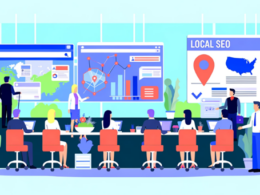Small businesses vary widely from brand to brand. Starting an online lead generation agency is wildly different than opening a brick-and-mortar hair salon. However, all small businesses follow the same five stages of growth.
Knowing these small business growth stages can help you anticipate challenges and plan for success no matter what vertical your business specializes in.
Stage 1: Existence
The first step in starting a business is bringing your idea into existence. In this phase, the owner is often the sole proprietor or has a few employees. Systems and planning are minimal or don’t exist at all.
Main challenges: Obtaining customers, delivering the product and keeping adequate cash flow.
Takeaway: In planning for the challenges of stage one, make plans for who your customers are, how your product will help them, how your product will be delivered and how you will get initial capital to start the business.
Making Commerce Better for Everyone
Shopify is supporting the next generation of entrepreneurs, the world’s biggest brands, and everyone in between
Stage 2: Survival
In the survival stage, the business proves viable. A workable product is drawing in enough customers to allow the business to survive. Systems and operations remain small and simple.
Main challenge: Revenue vs. expenses – can the business do more than break even?
Takeaway: In planning for the challenges of stage two, continue to focus on revenue. See where you can cut operating costs, improve profit margins and plan for scalability.
Stage 3: Success
At this stage, the business grows to a level that can support itself indefinitely. Profit margins are average or above average. The owner can now decide between two options: 1. Scaling the business for larger growth and success or 2. Stepping back to reclaim time and allow the business to function independently.
Main challenges: Creating systems and processes that allow the business owner to step back or scaling to bigger and bigger proportions.
Takeaway: In planning for stage three, have an idea of your larger goals for the business. This is the stage where major pivotal decisions can be made.
Making Commerce Better for Everyone
Shopify is supporting the next generation of entrepreneurs, the world’s biggest brands, and everyone in between
Stage 4: Takeoff
If you choose to grow your small business rather than take a step back in Stage 3, it can grow into the takeoff stage. This stage involves rapid growth and expansion which, if successful, will take your business from small to big.
Main challenges: Rapid growth requires more complicated business structures. Delegating, managing large teams, maintaining vision and cash are common challenges.
Takeaway: If you plan to grow your business from small to large, it may be helpful to find a business partner with skillsets for large companies if you do not have them already yourself.
Verizon Digital Ready Provides the Free Skills Training Entrepreneurs Need
Stage 5: Resource maturity
If a business succeeds past the takeoff phase, it becomes mature. In this phase, leadership is spread across several stakeholders, processes and planning are excellent and the business holds a sizable market share.
Main challenges: A larger size can make pivoting to shifting market demands slower and more difficult.
Takeaway: As a mature business, stay on top of market trends and be willing to make needed changes. Be a lifelong learner.
Marketing your small business: a helpful infographic
As you grow your small business, marketing is essential. Check out this helpful infographic, courtesy of Quicken Loans, to learn more tips for growing as a small business.
Key takeaways for generating growth for your small business
The five stages of small business growth provide a useful framework for entrepreneurs to understand the trajectory of their businesses and plan for growth accordingly. By identifying which stage their business is in, entrepreneurs can develop appropriate strategies for marketing, operations, and financing.
The first stage, the existence stage, is characterized by a focus on survival and establishing a customer base. In this stage, marketing efforts should be focused on building brand awareness and attracting new customers. Entrepreneurs should also be mindful of cash flow and managing expenses to ensure the viability of their business.
The survival stage is characterized by continued growth and the establishment of a stable customer base. Marketing efforts in this stage should focus on customer retention and building brand loyalty. Entrepreneurs should also focus on improving operational efficiency to maximize profitability.
The success stage is marked by sustained growth and profitability. In this stage, marketing efforts should focus on expanding the customer base and increasing market share. Entrepreneurs should also consider diversifying their product or service offerings and exploring new markets.
The take-off stage is characterized by rapid growth and expansion. Marketing efforts in this stage should focus on scaling the business and establishing a strong market position. Entrepreneurs should also consider raising capital to finance growth and investing in infrastructure to support expansion.
The final stage, the resource maturity stage, is characterized by stability and a focus on long-term sustainability. In this stage, marketing efforts should focus on maintaining market share and diversifying revenue streams. Entrepreneurs should also consider succession planning and developing a long-term strategy for the future of the business.
Overall, the five stages of small business growth provide a roadmap for entrepreneurs to navigate the challenges and opportunities of building a successful business. By understanding the characteristics of each stage and developing appropriate strategies, entrepreneurs can position themselves for sustainable business growth and long-term success.








